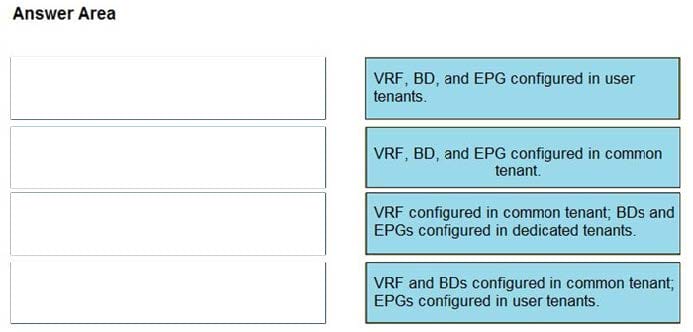600-660 Online Practice Questions and Answers
Questions 4
DRAG DROP
Drag and drop the tenant implementation designs from the left onto the outcomes of the design when a greenfield Cisco ACI fabric is deployed on the right.
Select and Place:
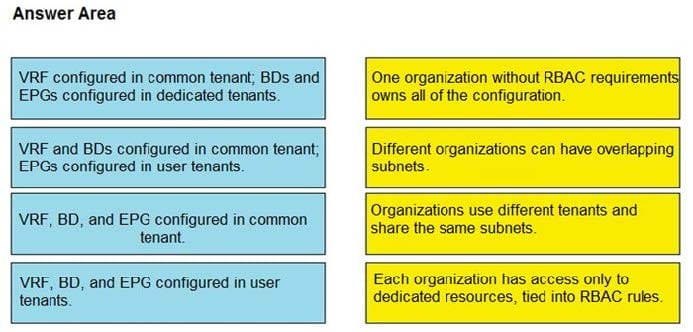
Questions 5
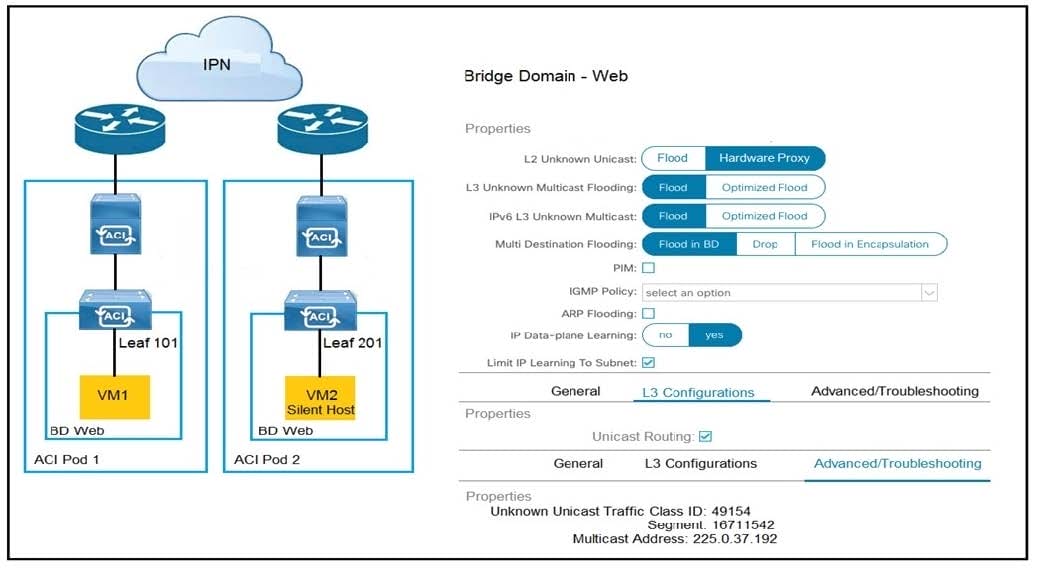
Refer to the exhibit. How is the ARP request from VM1 forwarded when VM2 is not learned in the Cisco ACI fabric?
A. Leaf 101 forwards the ARP request to one of the proxy VTEP spines.
B. POD1 spine responds to the ARP request after the POD1 COOP is updated with the VM2 location.
C. Leaf 101 encapsulates the ARP request into a multicast packet that is destined to 225.0.37.192.
D. Leaf 101 switch consumers the ARP reply of VM2 to update the local endpoint table.
Questions 6
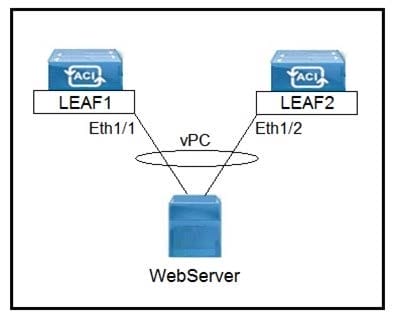
Refer to the exhibit. Which three actions should be taken to implement the vPC in the Cisco ACI fabric? (Choose three.)
A. Select a common vPC interface policy group
B. Select individual interface profiles
C. Select common interface profiles
D. Select individual switch profiles
E. Select common switch profiles
Questions 7
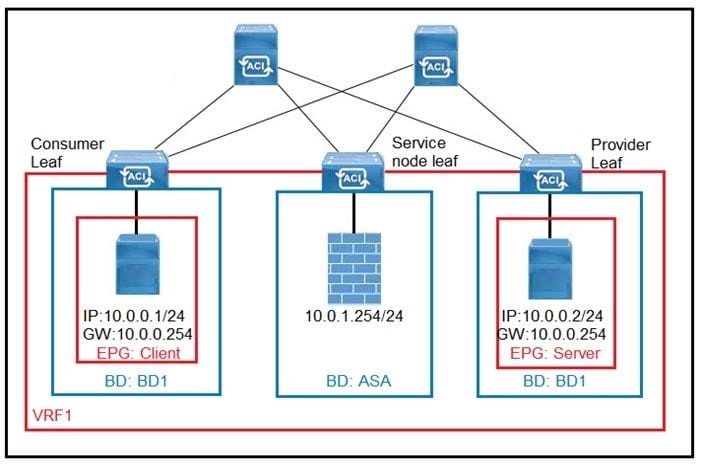
Refer to the exhibit. What must be configured in the service graph to redirect HTTP traffic between the EPG client and EPG server to go through the Cisco ASA firewall?
A. contract filter to allow ARP and HTTP
B. precise filter to allow only HTTP traffic
C. contract with no filter
D. permit-all contract filter
Questions 8
Which two actions should be taken to ensure a scalable solution when multiple EPGs in a VRF require unrestricted communication? (Choose two.)
A. Configure a taboo contract between the EPGs that require unrestricted communication between each other.
B. Enable Preferred Group Member under the EPG Collection for VRF section.
C. Set the VRF policy control enforcement preference to Unenforced.
D. Set the EPGs that require unrestricted communication between each other as preferred group members.
E. Set the EPGs that require policy enforcement between each other as preferred group members.
Questions 9
Which two components must be configured as stretched to establish intra-VRF communication between two EPGs that are deployed in different sites and different bridge domains? (Choose two.)
A. contract
B. tenant
C. application profile
D. bridge domain
E. EPG
Questions 10
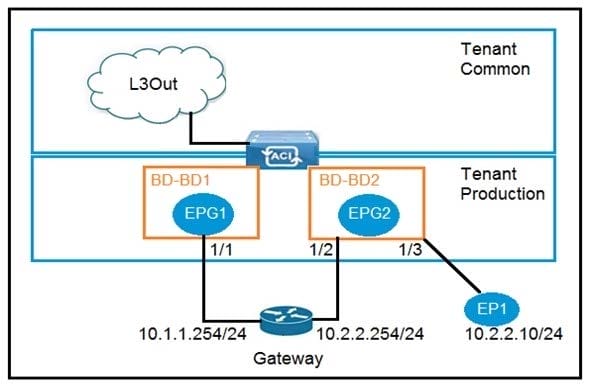
Refer to the exhibit. An engineer wants to avoid connectivity problems for the endpoint EP1 when it reaches an external L3Out network through the gateway 10.2.2.254/24. Which two configurations must be implemented in BD-BD2? (Choose two.)
A. Disable unicast routing
B. Enable IP data plane learning for the VRF
C. Disable ARP flooding
D. Enable ARP flooding
E. Enable unicast routing
Questions 11
An engineer configures a new Cisco ACI Multi-Pod and must set up the link between the spine and the IPN device. Which three actions should be taken to accomplish this goal? (Choose three.)
A. Enable MP-BGP routing
B. Enable BIDIR-PIM protocol
C. Enable PIM-SM protocol
D. Enable OSPF routing
E. Enable IS-IS routing
F. Enable DHCP relay
Questions 12
An engineer configures a new Cisco ACI Multi-Site Orchestrator node to join an MSO cluster. Which two components are necessary to ensure that the new node has IP connectivity in this configuration? (Choose two.)
A. Cisco ACI spine interfaces that are connected to ISN
B. Cisco APICs over the OOB management network
C. existing Cisco ACI Multi-Site Orchestrator node
D. management IP of ESXi hosts where the controllers are deployed
E. OOB interface of ISN
Questions 13
In a Cisco ACI Multi-Site fabric, the Inter-Site BUM Traffic Allow option is enabled in a specific stretched bridge domain. What is used to forward BUM traffic to all endpoints in the same broadcast domain?
A. ingress replication on the spines in the source site
B. egress replication on the source leaf switches
C. egress replication on the destination leaf switches
D. ingress replication on the spines in the destination site

